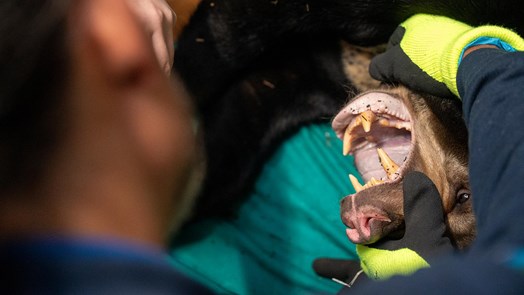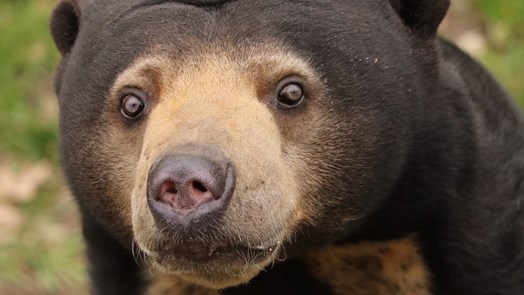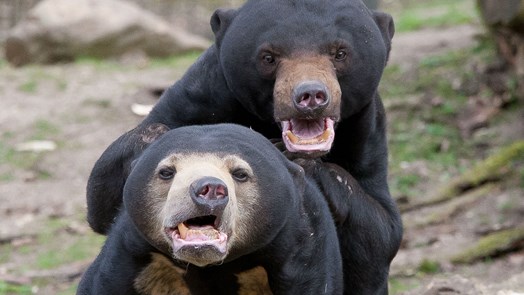German specialists research fertility in bears
Thursday, 11 January 2018

On Friday 12 January 2018, specialists from the German Institute for Zoo and Wildlife Research (IZW) will investigate together with Burgers’ Zoo’s veterinarian and biologists whether two female Malaysian bears are still fertile.
Both females are reasonably old–18 and almost 17.5–and research carried out by IZW on 15 September 2011 showed that the 13.5 year old male is infertile. Should one or both of the she-bears prove to be fertile it will initiate a number of transport operations in Europe for the European breeding program. The Arnhem male will move to Münster (Germany), while a male from Edinburgh (Scotland) will move to Burgers’ Zoo. These first transports will trigger a further European transfer carousel with the aim of maximising the number of potentially fertile Malaysian bear couples throughout Europe.
Complicated challenges for the European breeding program
The Malaysian bear is a difficult to breed species. The coordinator of the European breeding program faces some interesting challenges. Male Malaysian bears can already be fertile at the age of three – for females this is around the age of four. Data collected in the European studbook shows that one female Malaysian bear had her first young at the age of sixteen and a male that had his first offspring at the age of thirteen. This information offers a positive indication for the current situation in Arnhem, provided of course that a fertile male travels to Arnhem. The European Studbook for this species also shows that the current European population is ageing considerably. The number of animals that still could be fertile in terms of age is relatively small. In zoos, Malaysian bears can reach thirty years of age. Last year, only one Malaysian bear was born in all of Europe’s zoos, and unfortunately the young died after only one day. It also does not help that the male to female ratio is skewed: there are at least twice as many females than males in Europe. In short: young Malaysian bears are very welcome for the future of the European breeding program!

The initiation of a European transfer carousel?
All European zoos with Malaysian bears are taking on the challenge together and want to unite their efforts to form potentially successful breading couples at as many European locations as possible. Basically dealing everybody a new hand. If, on Friday 12 January, it turns out that one or both she-bears are still fertile, this will mark the start of a genuine European transfer carousel, with bears being transferred free of charge to fellow zoos, all with the greater goal in mind which exceeds the individual interest of all animal parks concerned: the future of this species in European zoos. Thanks to close European cooperation regarding scientific research materials (genetic research concerning DNA material as input for the professionally run breeding program), the joint efforts will hopefully bear fruit in the long run.
A final option could be that Malaysian bears from animal parks in other continents (e.g. North and South America or Asia) move to Europe in the near future to provide fresh blood in the European population. But because of the increased travel distances, extra veterinarian precautions, and that fact that it a huge undertaking for both the animals and humans involved, such options will not be considered until the new distribution of the European population of Malaysian bears fails to achieve the desired breeding successes.



